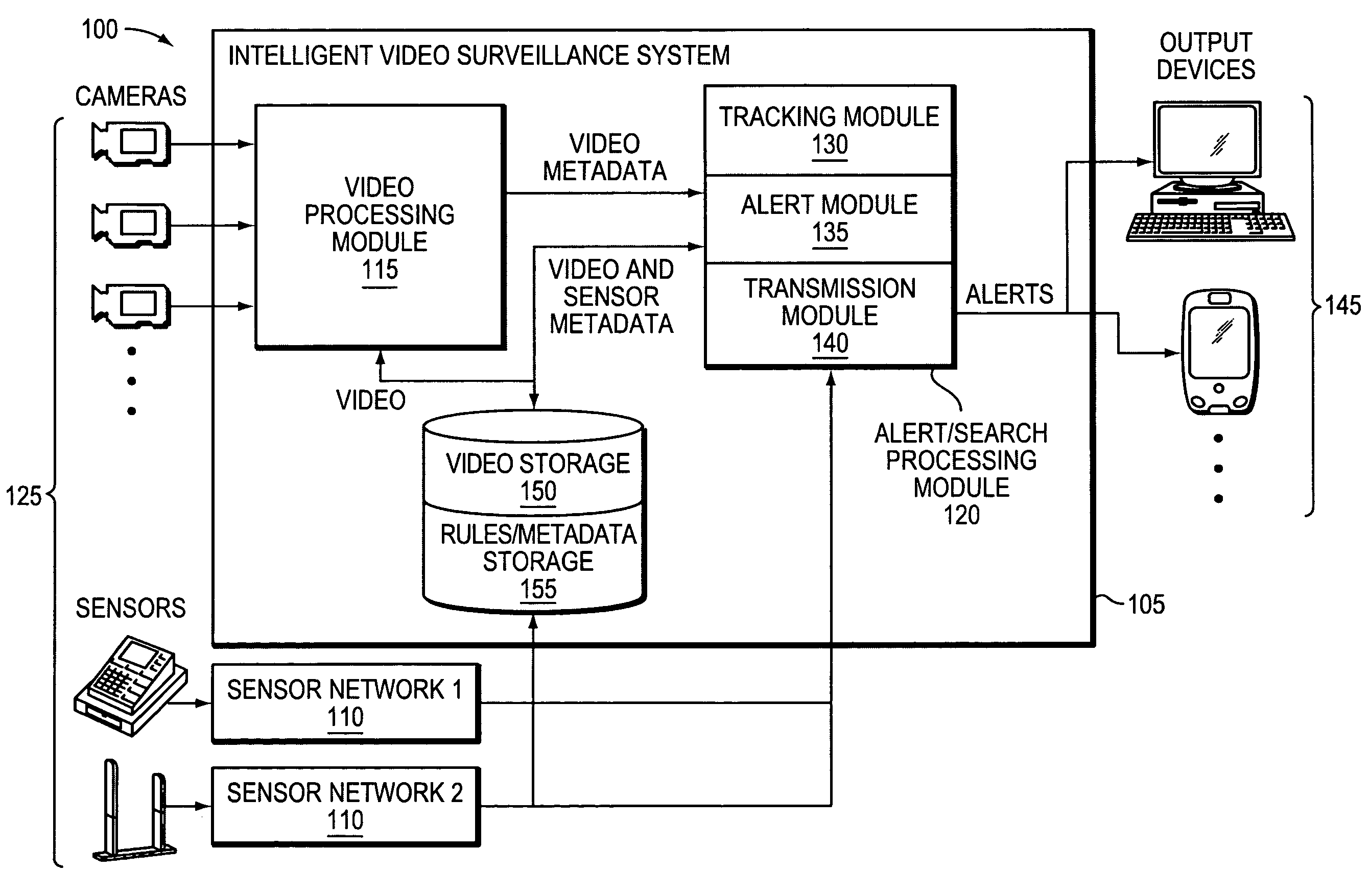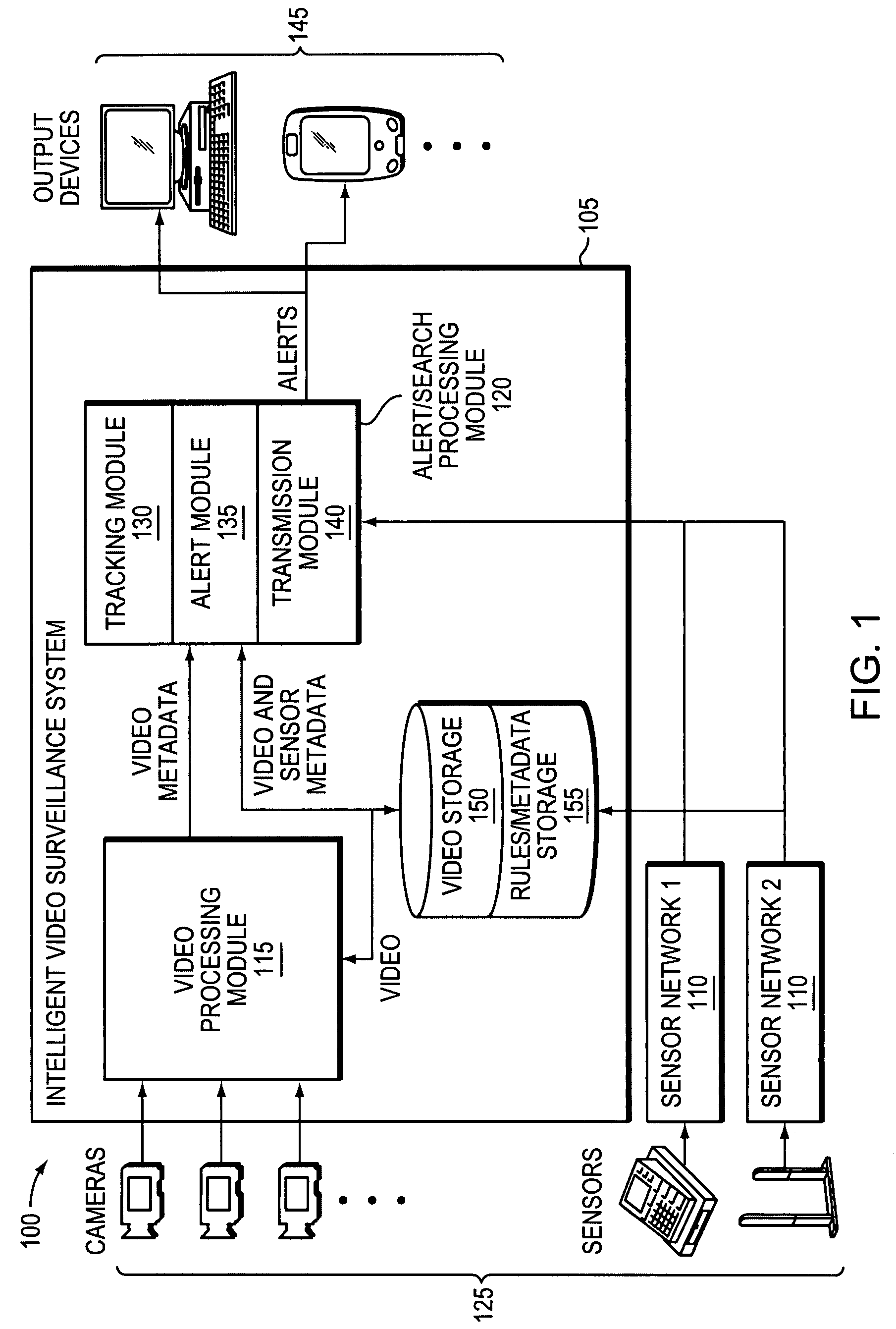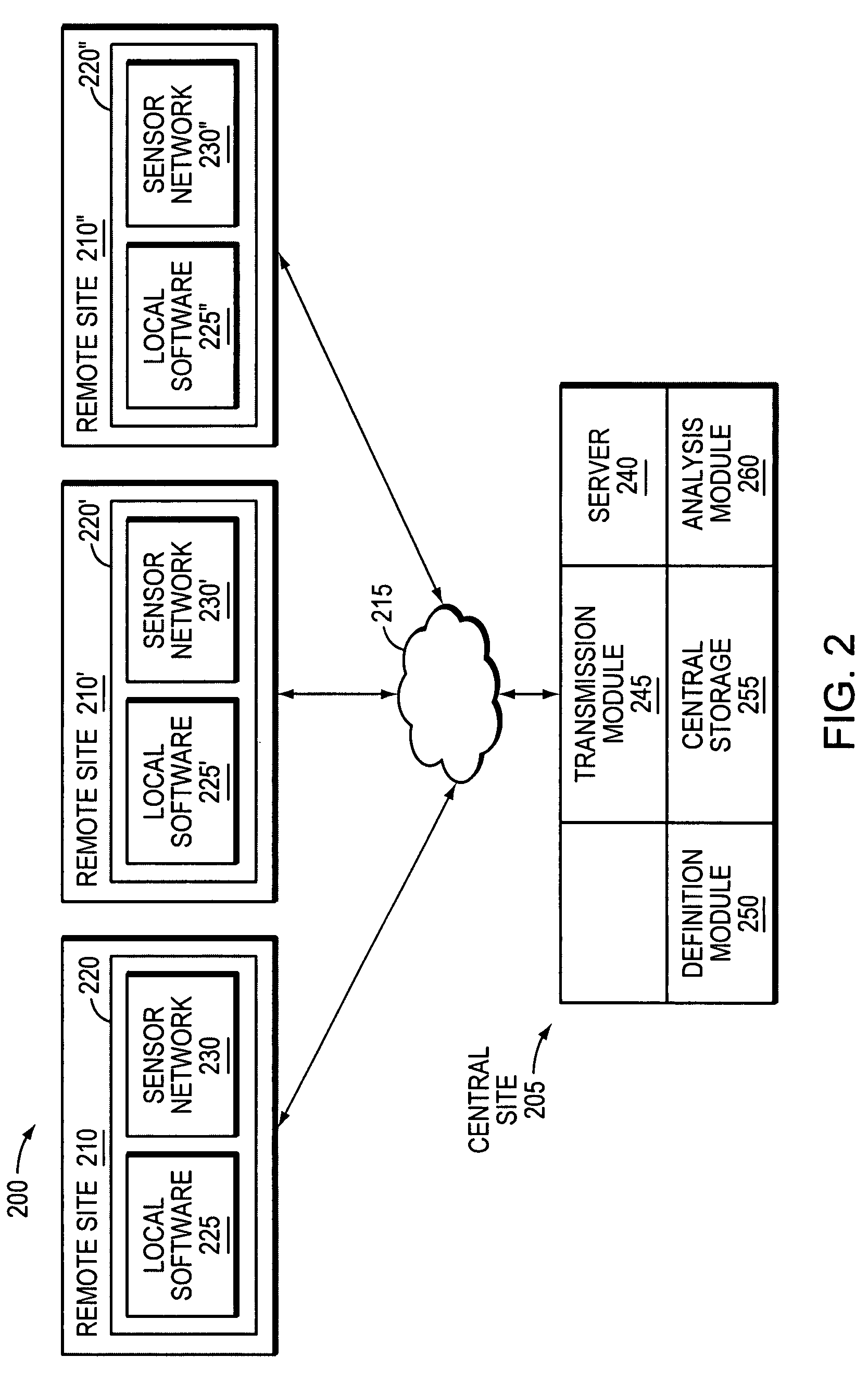Systems and methods for distributed monitoring of remote sites
a distributed monitoring and remote site technology, applied in the field of computer-aided surveillance systems, can solve the problems of difficult single person, difficult for a single person, and event can appear quite different, and the requirement of all locations to be identical is not practical, so as to achieve the effect of ensuring the safety of the environmen
- Summary
- Abstract
- Description
- Claims
- Application Information
AI Technical Summary
Benefits of technology
Problems solved by technology
Method used
Image
Examples
Embodiment Construction
[0029]Although described herein with reference to tracking patrons and products within retail establishments, and as useful when implemented with regard to detecting theft and measuring various merchandising and operational aspects of stores, the systems and techniques described below are equally applicable to any environment being monitored, such as airports, casinos, schools, amusement parks, entertainment venues, and office buildings for a wide range of purposes.
[0030]FIG. 1 illustrates an integrated video surveillance and sensor network system 100 in accordance with various embodiments of the invention. The system 100 captures surveillance data from any number of monitoring devices within one or more monitored sites, the data thus being available for analysis and / or processing locally (at each monitoring device, at a local processor or both), at a single centralized location and / or at any number of intermediate data processing locations. In some embodiments, the processing and a...
PUM
 Login to View More
Login to View More Abstract
Description
Claims
Application Information
 Login to View More
Login to View More - R&D
- Intellectual Property
- Life Sciences
- Materials
- Tech Scout
- Unparalleled Data Quality
- Higher Quality Content
- 60% Fewer Hallucinations
Browse by: Latest US Patents, China's latest patents, Technical Efficacy Thesaurus, Application Domain, Technology Topic, Popular Technical Reports.
© 2025 PatSnap. All rights reserved.Legal|Privacy policy|Modern Slavery Act Transparency Statement|Sitemap|About US| Contact US: help@patsnap.com



